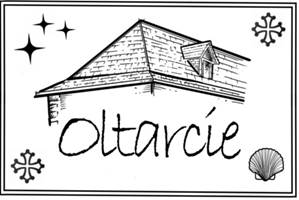GR651 Célé Route, from Figeac to St Cirq Lapopie
70km 4 days +1800m
The GR651 or Célé route, a variant of the famous GR65 (the Puy route to Santiago de Compostela) runs for 70 km from Figeac to Saint-Cirq-Lapopie in the Lot , along two majestic rivers. The hike through the Célé valley is a perfect blend of nature, viewpoints, secret places and charming villages. All while hiking in the heart of the Causses du Quercy Regional Natural Park, in the heart of the Lot department.
More sporty , this route is rich in altitude , but the visual power of the landscapes consoles the heated calves, between golden cliffs, ruins set in stone and ancient heritage
Day 1: from Figeac to Sainte-Eulalie
23 km
Figeac, an important crossroads for centuries, is one of the best-preserved medieval towns in France. It is well served by public transport, which will be easy to connect to. Take a moment to visit the city's various museums and monuments.
From Figeac, heading southwest, you can access the Célé Valley by first following the GR65 de Compostelle (St. James's Way) along the water. The trail heads out a little further and climbs to the very pretty hamlet of Faycelles before turning back towards Béduer (13km stage), where the two long-distance hiking trails then separate.
The magnificent village of Corn showcases the uniqueness of the Célé. Here, pale stone, wood, and Virginia creeper blend together on the facades, and water punctuates life. The Corn cave and washhouse, on the banks of a lively spring, and the beaches along the Célé River offer a refreshing break before our final stretch to Espagnac Sainte-Eulalie.
Day 2: Espagnac-Sainte Eulalie – Marcilhac-sur-Célé
19km
The 12th century Espagnac priory once housed Augustinian nuns. The atmosphere is delightfully medieval, with the immense cloister, the pointed arched doors, and the wooden half-timbering that corsets the high towers. We gather our strength to climb back up to the causse : the sublime Sentier des Anglais in Brengues . Here, fortresses blend into the stone, castles are suspended in the cliff, arches emerge between two rocks. The oldest buildings date back to the 11th century, and overlook the path carved into the rock.
The descent to the river at Marcilhac-sur-Célé is a blessing. This magnificent, flower-filled village is built around the spectacular ruins of a Benedictine abbey , its bare arches thrusting into the blue sky. Amid these ruins, a church remains intact, beautiful, and still consecrated.
Day 3: Marcilhac-sur-Célé – Cabrerets
19km
Here, the traveler has the choice: Tiring your legs or arms? Some hikers riddled with blisters choose to swap their hiking boots for a paddle! In summer, you can complete this stage by canoe with Passion Aventure and row between the cliffs of the Célé.
Another highlight of the Célé route: crossing the old Sauliac , a troglodyte village abandoned during the 20th century. Its houses were bought and restored by enthusiasts, artists or foreigners who fell in love with the Lot.
You walk among dry stone walls, past the iconic Quercy caselles —traditional houses typical of Lot architecture. Arriving near Cabrerets, you'll find the remains of the English and these hilltop castles. In Cabrerets, you'll find the banks of the Célé, waterfront restaurants, and a pleasant, cool breeze.
Day 4 – Cabrerets – Saint Cirq Lapopie
11 km
This short stopover allows time to explore and visit the extraordinary decorated cave of Pech Merle , a true masterpiece of cave art and a prehistoric gem: the fresco of dotted horses has been galloping in the darkness for 29,000 years. A rare occurrence: you are visiting the real cave, not a reproduction.
In Bouziès, at the confluence of the Célé and the Lot, the walker has a choice: he can continue directly towards Cahors on the GR36-46 or take a slight detour by following the iconic towpath which leads to Saint-Cirq-Lapopie, classified as one of the most beautiful villages in France.
For centuries, the people of Lot transported goods along the waters of the Lot using barges (gabarres), pulled from the banks of the river by human or animal traction (mules). But between Bouziès and Saint-Cirq-Lapopie, the riverbank disappeared into a steep gorge. It was therefore necessary to carve a 4 km mineral path into the cliff , which is well worth the detour.
Arrival: Saint-Cirq-Lapopie
One last steep hill to climb, and you arrive at Saint-Cirq-Lapopie : this village clinging to its rock , a maze of alleys between cobblestones, tiles and bell towers above a meander of the Lot, is an incredible sight. No fewer than thirteen historical monuments mark this chiseled citadel, an extraordinary testimony to the heritage of the Middle Ages in Lot.


